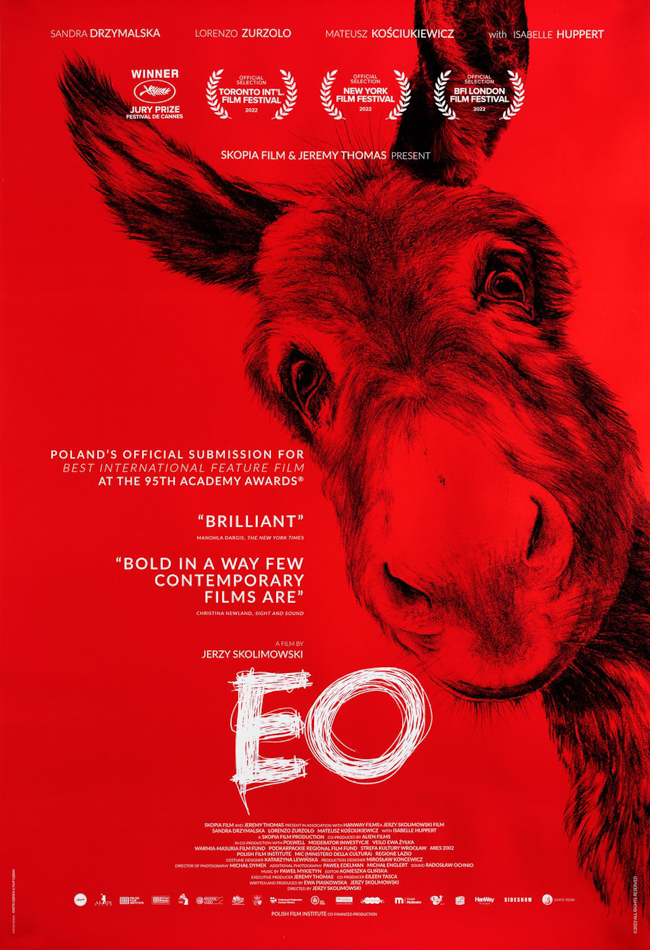
We went to the movies for the first time in a long time, so what drew us in? A Polish film titled EO that follows the life of a donkey. Not only does the film follow this creature, but it’s essentially shot from the point of view of the donkey as it wanders around a cruel world, dreaming and apparently looking for something. We never really know what the donkey is chasing, if anything at all, but it does seem to have a purpose. Along the way, the donkey is abused, traded, used, and loved, but ultimately it meets its end in darkness. The film, with the closing scene, becomes an indictment of the cruelty people inflict not only upon one another but on our animals, too. Through the eyes of the donkey, the people of the film are essentially as aimless as the animal we are focusing on. They flash in and out of having a purpose, only to turn around to harm something or someone. Even in one of the redeeming scenes where EO is being used to give handicapped children rides in the forest, someone out of view of the camera falls a tree, implying to me that at every turn, there is someone destroying something.
This is not a feel-good film; nothing is resolved, and as I said, it ends in darkness, except for the sound of the bolt that obviously takes EO’s life. The movie is a beautiful visual narrative driven by only a minimum of dialog between Polish and Italian. It leaves you thinking about our own senseless natures when most people likely believe that our animals are the senseless ones. I feel like there’s more to this film I need to unpack, and nearly wish I’d kept notes about the pacing, dream sequences from the donkey’s perspective, and the various acts of human depravity. There’s something more here than meets the eye, though I may also be overthinking things.
Originally, this post was about nothing more than the donkey movie, but as it turned out, we opted for a few more movies in rapid succession after not finding disappointment in EO. Next up was Women Talking, which had us listening to a conversation about the underlying unpredictable nature of violence in men and boys. We followed this with The Banshees of Inisherin, featuring two actors that both of us enjoy, Colin Farrell and Brendan Gleeson, who portray the stupidity of war using our protagonists as stand-ins for opposing sides in a conflict. Our final movie in this sequence was Tár with Cate Blanchett. At first blush, it felt like watching paint dry, but a day later, we were talking about the poison of narcissism. In some way, Tár had something in common with EO in that we are primarily looking at the world through the eyes of something that is difficult to relate to: on one hand, a donkey and, on the other, a narcissist. And if I want to stretch, Banshees features a donkey that ends up playing a pivotal role that brings up thoughts of the donkey in EO.
I believe it has been years since the two of us have seen so many movies in quick succession.